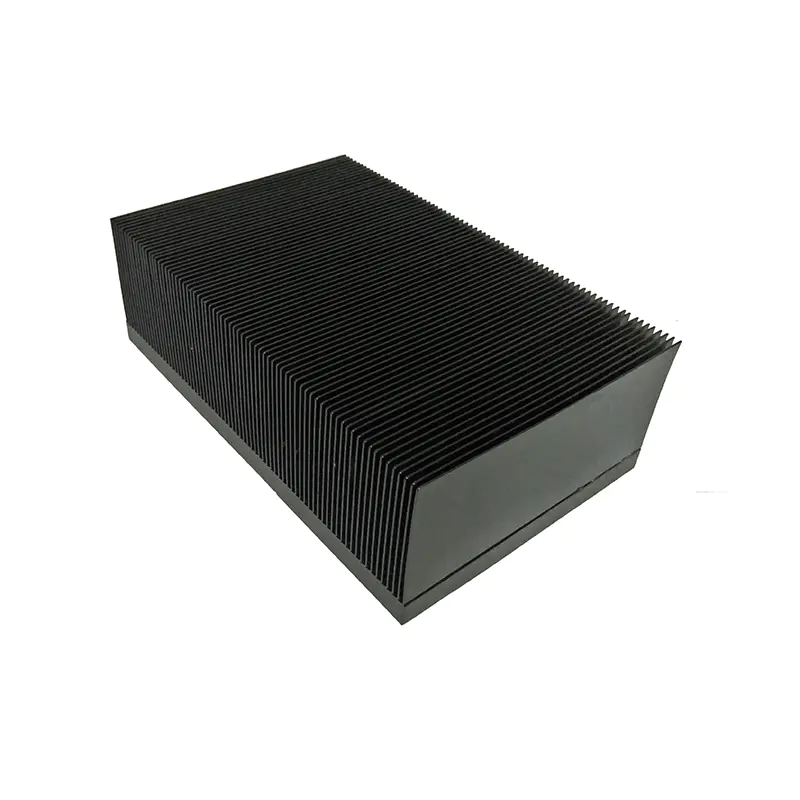Anodizing is a surface treatment process commonly used for Heat Sinks, in which an oxidized film is formed by immersing the heat sink in an electrolytic solution under the action of an applied direct current. This oxide film has good corrosion resistance, abrasion resistance and aesthetics, and is widely used in aerospace, automotive manufacturing, construction and other fields.
Material preparation for anodizing
Before anodizing, the following materials and equipment need to be prepared first:
1. Metalwork:such as aluminum heat sink, magnesium alloy's heat sink, and so on.
2. Electrolyte: Commonly used electrolyte includes sulfuric acid, oxidized sulfuric acid and so on.
3. Electrolytic tank: the container used to hold the electrolyte and heat sink
4. Anode and cathode: the anode is the metalwork (heat sink or other metal work), and the cathode is the material insoluble in the electrolyte.
Process flow of anodizing
The following is the general process flow of anodizing.
Step 1:Cleaning
First, the heat sink is cleaned to remove impurities such as oil, dust and oxides on the surface. Commonly used cleaning methods include solvent cleaning, alkaline cleaning and acid cleaning. After cleaning, the heat sink is rinsed with water.

Step 2:Anodizing
1. Put the cleaned heat sink into the electrolyzer and connect it with the anode and cathode.
2. Prepare the appropriate electrolyte and inject it into the electrolyzer. Take care to adjust the concentration and temperature of the electrolyte to meet specific process requirements.
3. A DC power supply is applied and a current is passed between the heat sink and the anode, causing the heat sink to become the anode. Meanwhile, the cathode continuously absorbs the released electrons to maintain the charge balance in the electrolyte.
4. During the anodizing process, the proper current density and treatment time are maintained to control the thickness and nature of the oxide film.
Step 3:Sealing treatment
1. After completing the anodic treatment, take out the heat sink and rinse it with water.
2. Seal the holes, i.e. plug the tiny pores on the surface of the oxide film to improve its corrosion resistance. Usually use hot acid sealing or cold acid sealing method.
Step 4: Color (optional)
If you need to change the color of the oxide film, you can carry out the color treatment. First, prepare the appropriate coloring solution and inject it into the electrolytic tank; then put the heat sink into the electrolytic tank again and connect it with the anode and cathode; finally, apply the appropriate current, so that the pigment ions in the coloring solution will be deposited into the micropores of the oxidized film, completing the coloring process.
Step 5:Sealing
After completing the coloring, sealing process is carried out to improve the corrosion and wear resistance of the oxide film. Put the heat sink into the sealing tank first. Prepare the appropriate sealant and inject it into the sealing tank. Finally, the sealing tank is heated or wet-heated so that the sealant can penetrate into the oxide film and form a dense sealing layer.
The anodizing process is a commonly used metal surface treatment process, through which an oxide film with excellent properties can be obtained.Lori aluminum Heat Sinks are often subjected to anodized surface treatment, Lori can implement an efficient and stable anodizing production process to improve the quality and performance of the product.






